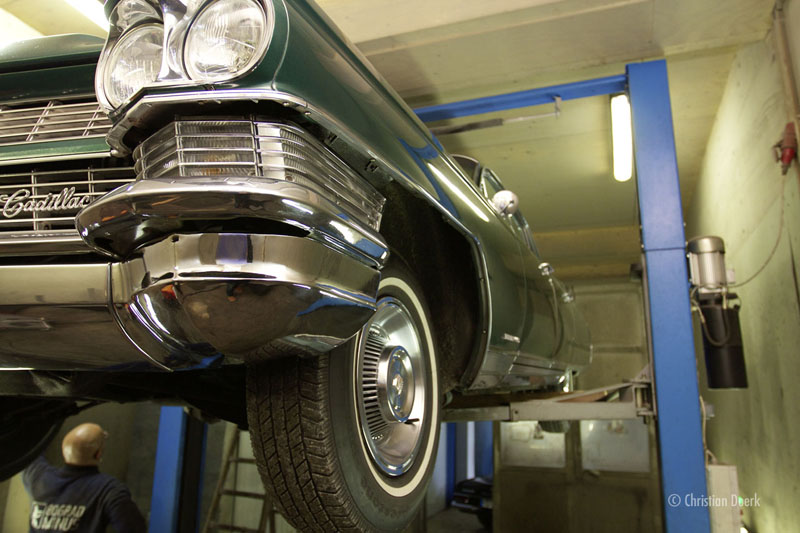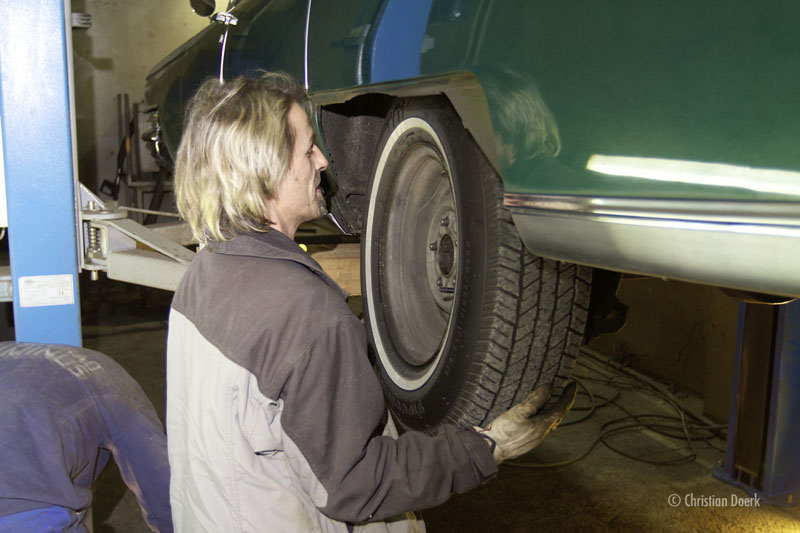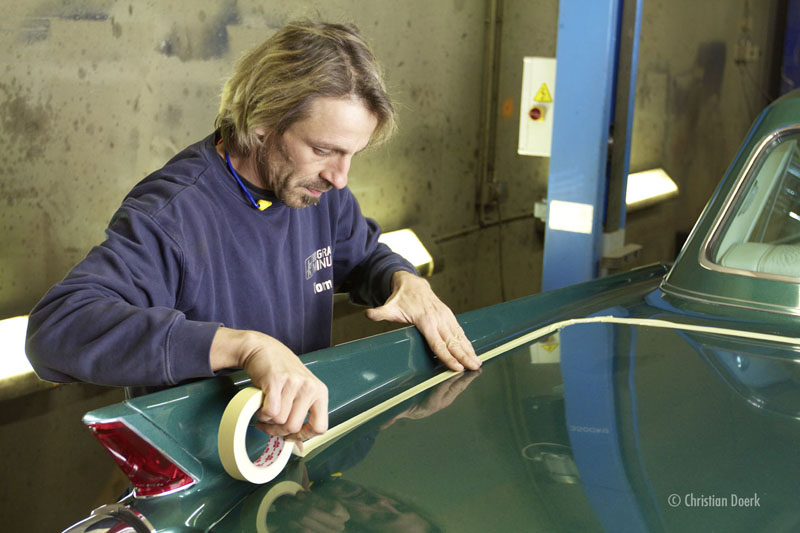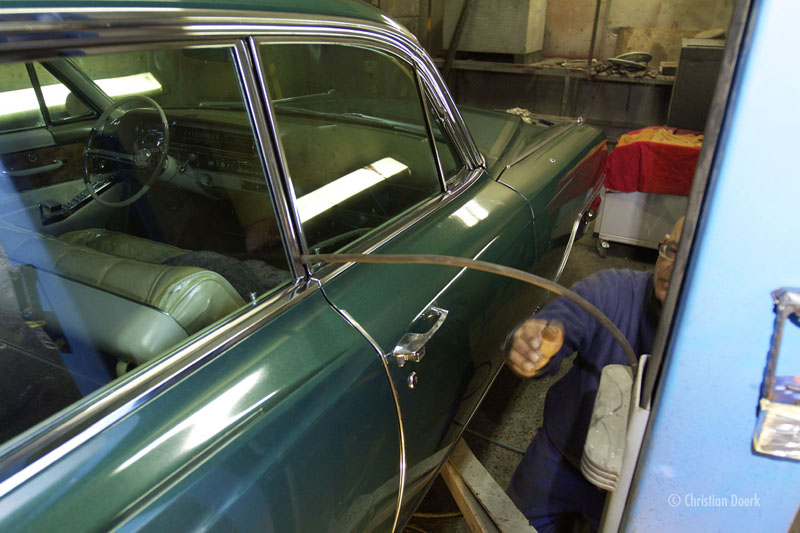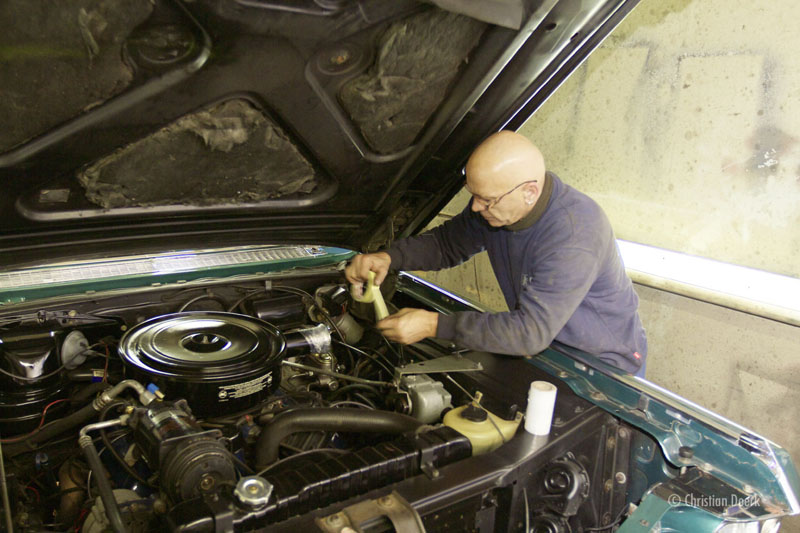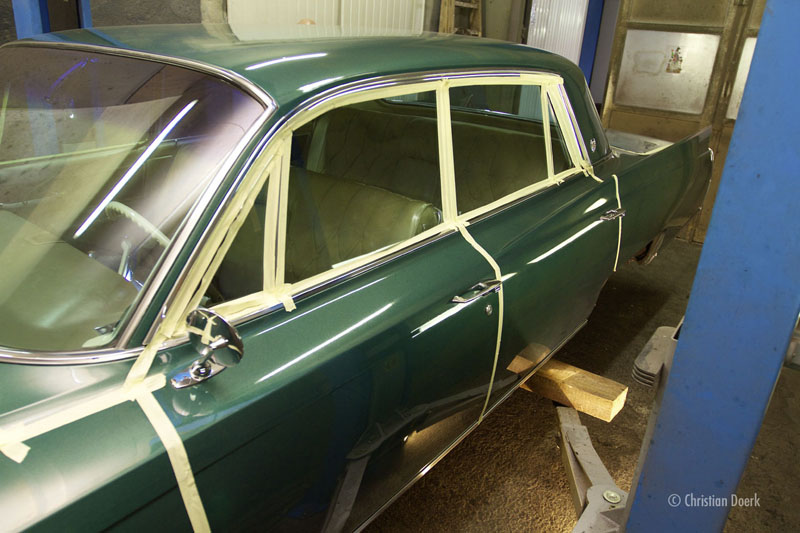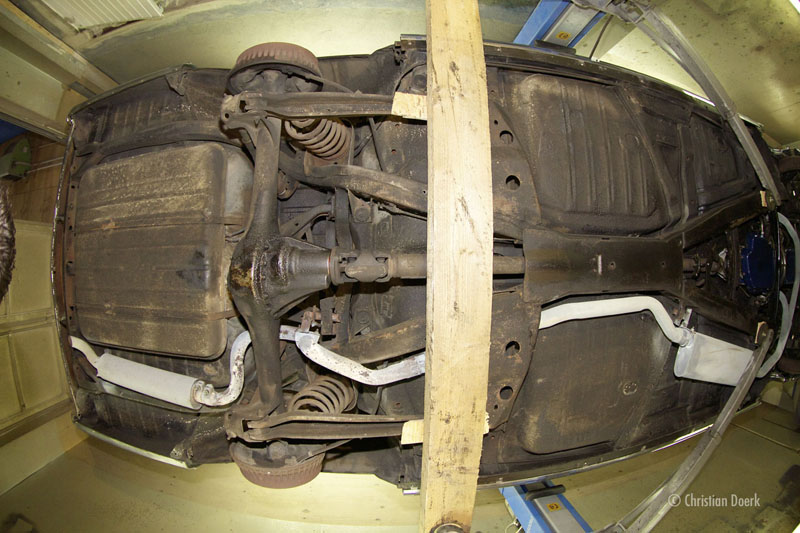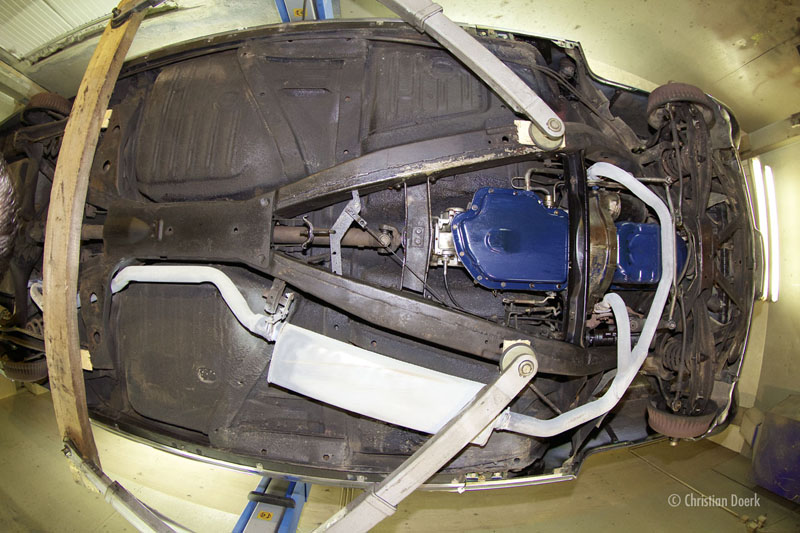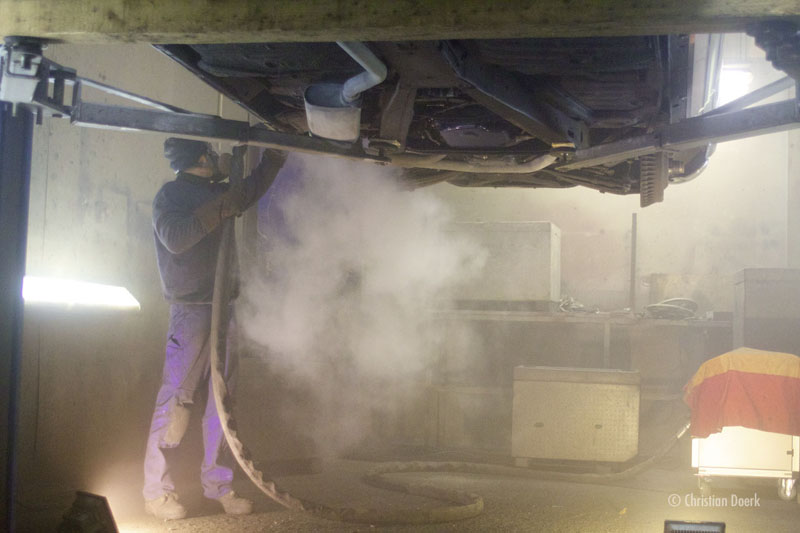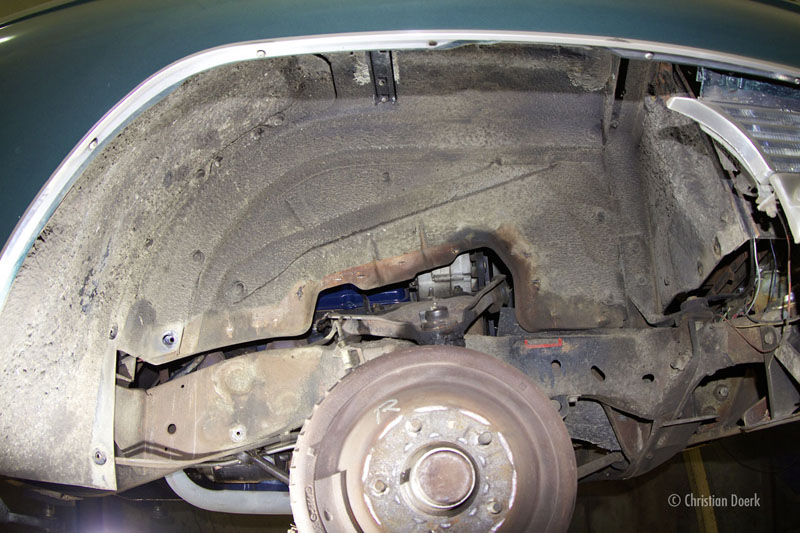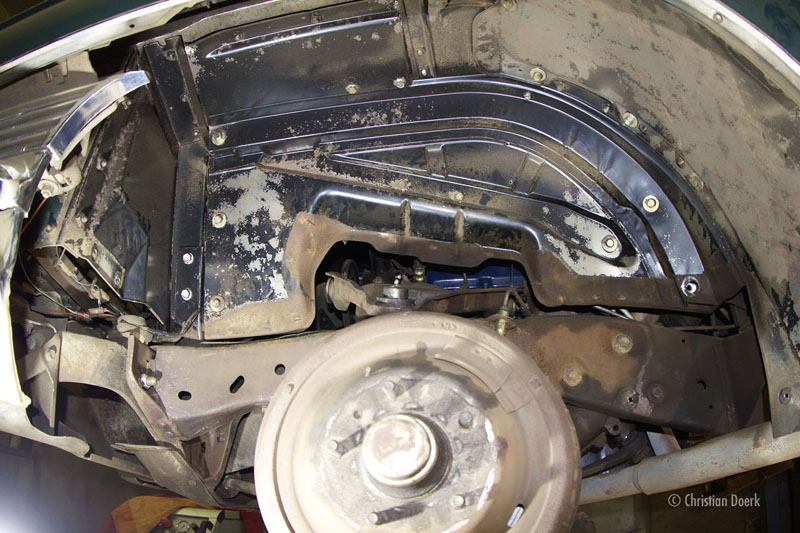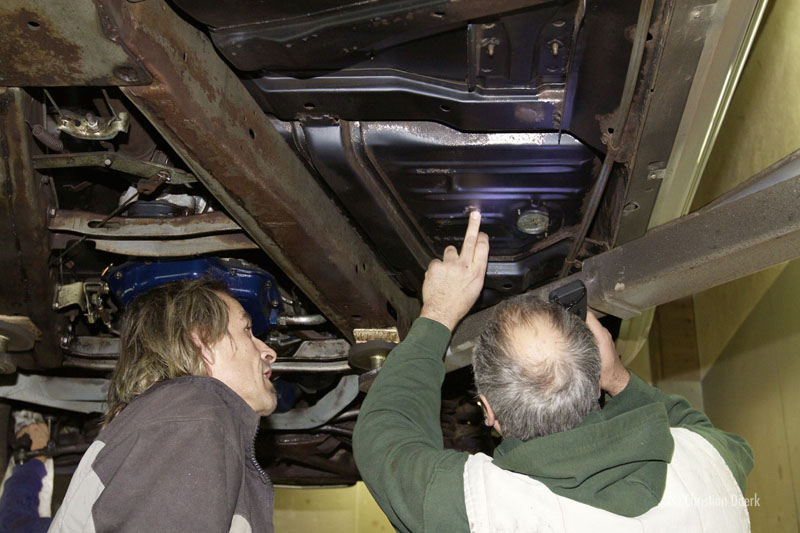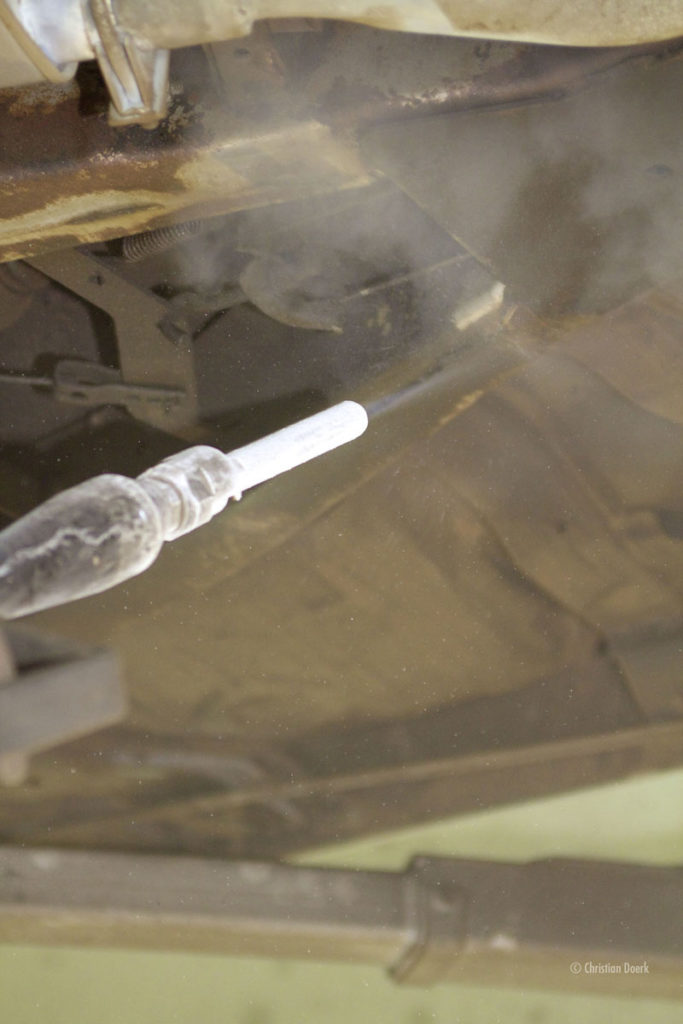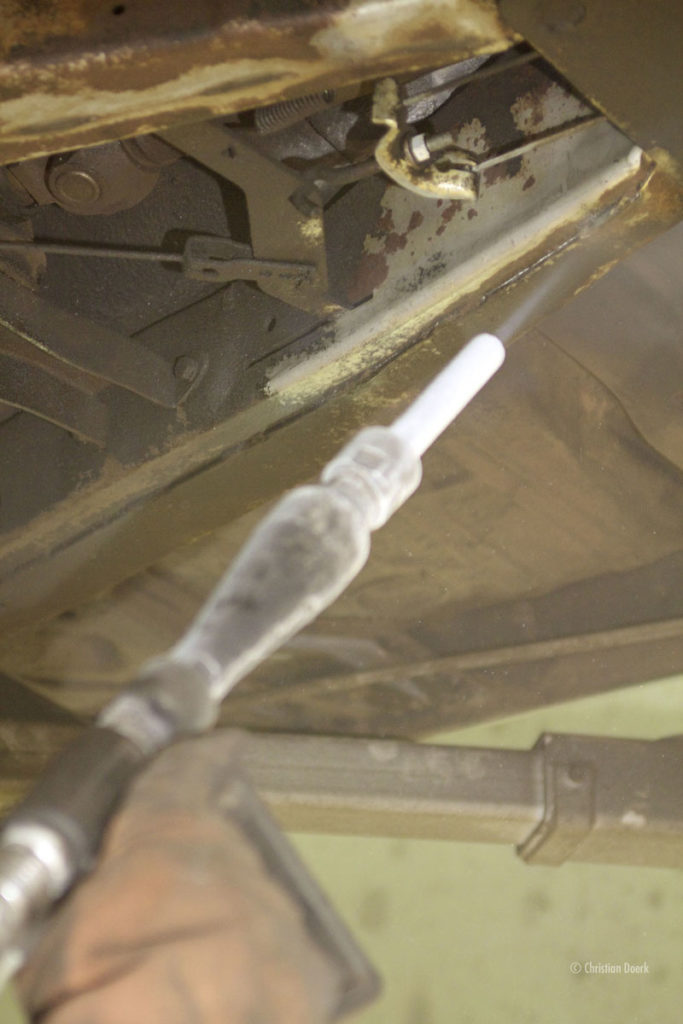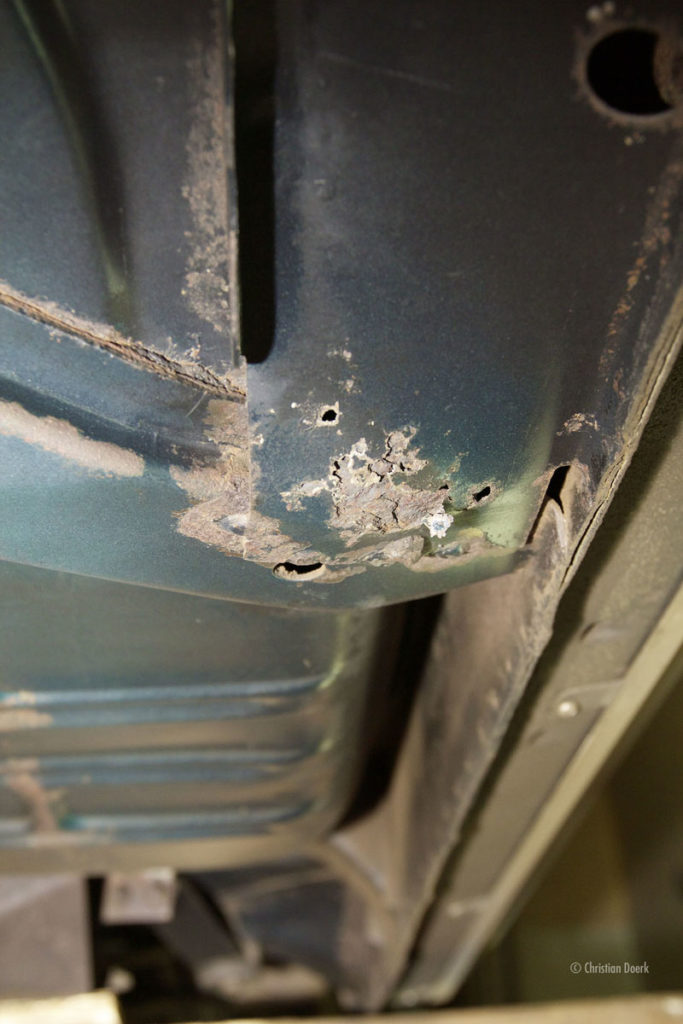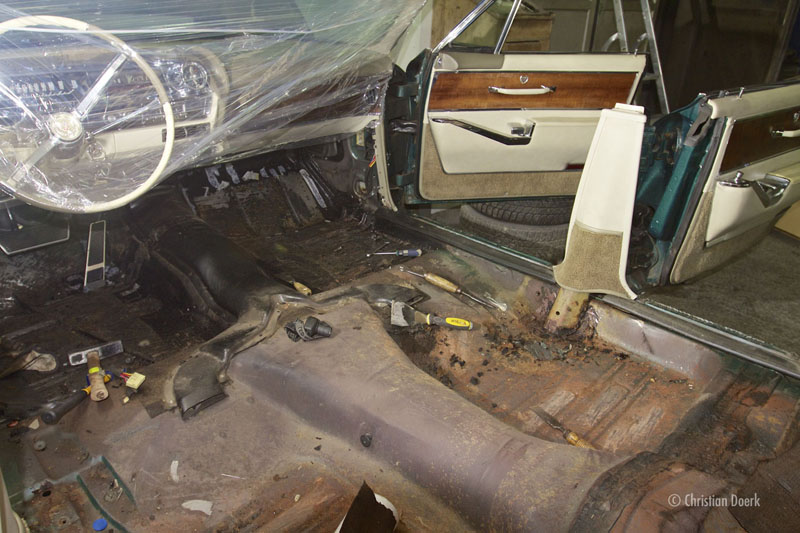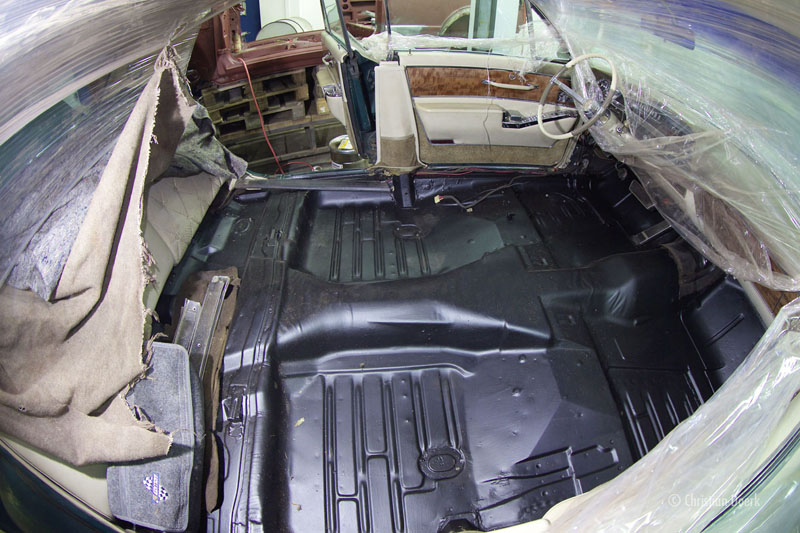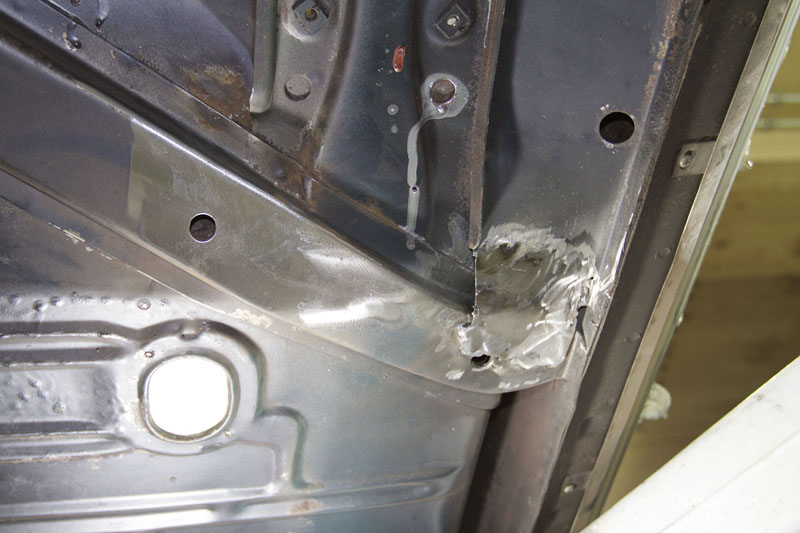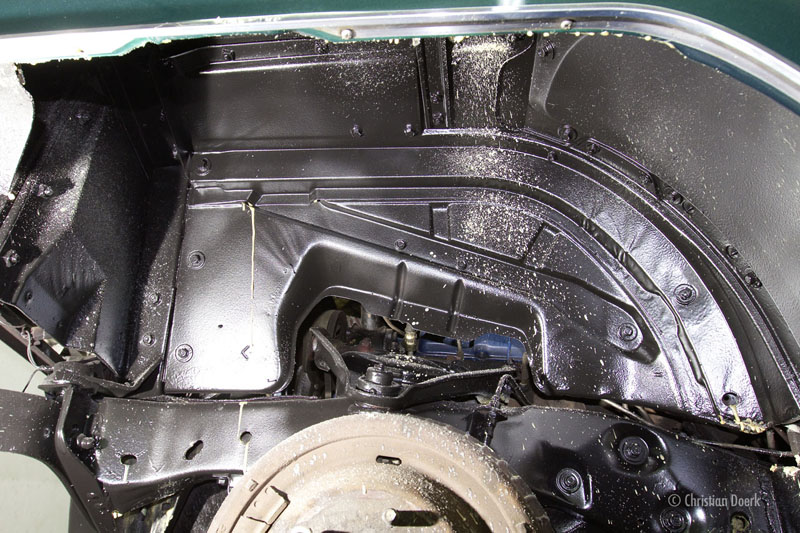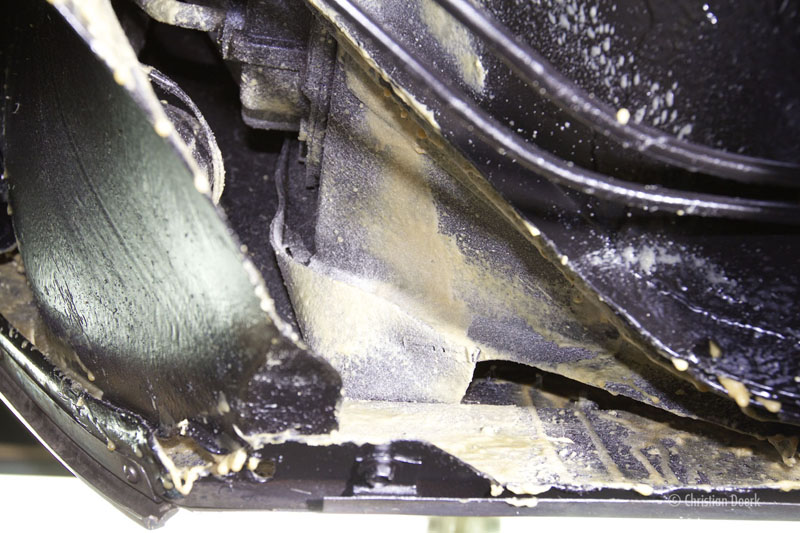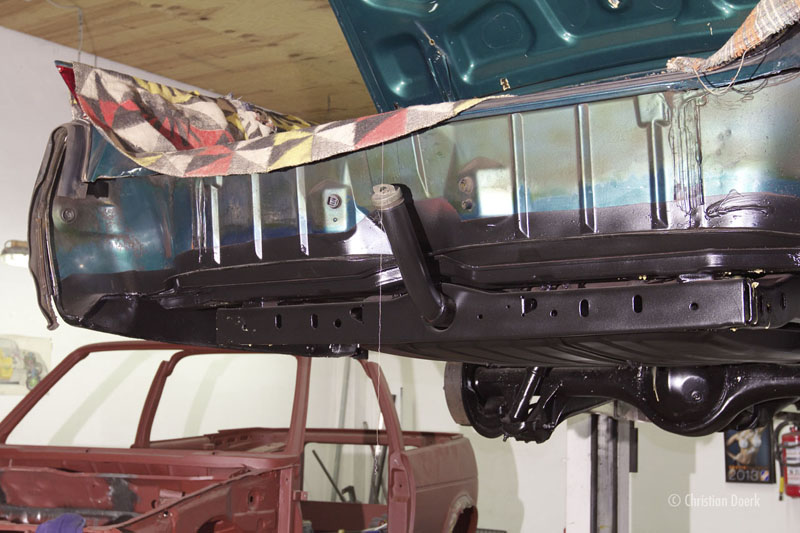Dry ice blasting of my 1964 Cadillac
The most effective, gentle and quickest method to remove the underbody from dirt and old, no longer effective underbody protection of many years is dry ice blasting.
I wanted to maintain the current good original condition of my 1964 Cadillac Sixty Special. A complete restoration would not have been necessary. Therefore I decided for a complete renewal of the underbody protection and for a cavity sealing. This way even rust that still exists has no chance to develop further. I don't have to be afraid of rain showers anymore and maybe my children will find joy in the old lady for many years to come.
Dry ice blasting is a relatively new blasting process that uses dry ice pellets the size of a grain of rice as the blasting medium. This technique was developed in the aircraft industry, where it is used primarily for cleaning moving parts (engines, landing gear, hydraulic components) and for removing paint from aircraft skins. Gentle and residue-free cleaning is particularly important for the special aircraft aluminum alloys that are susceptible to corrosion. For this purpose, the dry ice pellets are accelerated in an air stream and blasted onto the surface to be cleaned by means of a blast gun, as is known from conventional blasting processes.
Dry ice granules are approx. -78.5 °C cold or rounded up: 80 degrees minus. Compressed air is important for dry ice blasting.
The company 80GradMinus blasts at 10 bar pressure at 10 m³ of air per minute. This is about 15 times as much as a large workshop compressor.
The compressor has a truck diesel engine and has 110 kW (150 hp). That is why it is also difficult to find a site that is electrically large enough to connect an electric compressor.
The success of the blasting process is based on several circumstances:
The pellets are accelerated to a speed of approx. 400 m/s (over 1,400 km/h!) with a special blasting machine. This also explains the deafening noise that is generated during blasting. When the pellets (-78.5 °C) hit the object to be blasted (approx. 20 °C), a punctual thermal shock with temperature differences of up to 100 °C occurs.
Consequence: The coating to be removed contracts abruptly, becomes brittle and cracked. The subsequent pellets penetrate these cracks and release their kinetic energy, whereby the dry ice here immediately changes from a solid aggregate state to a gaseous one (sublimates) and increases its volume by a factor of 700 to 1,000. Submerged dirt is literally "blasted away". Underlying surfaces are not abrasively damaged because the pellets have only a low hardness of about 2 Mohs, similar to gypsum. Tooth enamel has approx. 5 Mohs, diamond 10 Mohs.
The focus here is on the removal of bituminous coatings (underbody protection), gentle paint stripping, engine cleaning, cleaning and degreasing of moving components and much more.
Dry ice blasting is highly environmentally compatible. The necessary CO2 is either obtained as a waste product in industry or it is extracted from the atmosphere with little energy input. Dry ice blasting does not add more CO2 to the atmosphere than was previously extracted from it.
The blasting medium itself is residue-free, groundwater-neutral and absolutely non-toxic. There is no need for cost-intensive disposal of used blasting material, nor is it necessary to attach a dirt apron to prevent blasting dust from blowing into the surrounding area.
For a car the size of a 1964 Cadillac Fleetwood Sixty Special, you need about 400 kg of dry ice and you blast for about 10 hours.
It is possible to blast the vehicle in running order without any problems. Sometimes, however, it can be advantageous to dismantle certain components, such as exhaust systems, plastic cladding, bumpers, etc., in order to better reach the surface. Rubber parts and most parts on the underbody are not damaged by blasting. Only cable insulation (bougie tubes) can be damaged, and also simply painted parts (e.g. brake anchor plates). Here, the paint simply comes off and they are then similarly bare as with stationary blasting.
To protect against dust, all doors and hood gaps are taped off and a compressed air line is laid in the vehicle to pressurize the interior. So no dust can get into the vehicle interior.
You can remove almost all materials from the underbody with dry ice. Such as bitumen, wax, grease, bad paint, road dirt, loose rust and the like. What cannot be removed are stone chip protectors that are rubber or PVC based. It varies greatly how well or how quickly coatings can be removed. This must always be tried out. It is also not possible to remove all coatings. With dry ice blasting you cannot remove rust deeply as with sand blasting. The metallic surface remains intact.
When sandblasted, it is rough and has lost strength. In the case of larger metal surfaces, sandblasting can also cause undesirable distortion. It also does not put heat into the sheet metal. However, if you are doing a full restoration and the vehicle is completely disassembled, it is usually cheaper and better to sandblast.
In any case, a grease-free, clean, paintable surface remains after blasting.
After blasting, further treatment of the underbody is necessary, so for the time being everything has only been cleaned. After blasting, you have a good overview of the actual condition of the vehicle. All the "crimes" of the past years are revealed.
It is the "Ohh- or also the Ahh-effect". Even obviously good vehicles like my 1964 Fleetwood may now reveal rust damage. Rarely is there nothing to weld.
The important thing now is to continue with the right materials:
- Welding where needed
- Prime in at least 2 coats on the surface, even partially rusty, with Brantho Korrux nitrofest, or with TimeMax-Paintrepair.
- Now a top coat in car color with a 2-component material. Or even better with TimeMax Color.
- In important places where water can collect or water can creep between sheet metal seams you have to seal with a good underbody wax or with TimeMax grease. This cavity grease from TimeMax is test winner in the Langzeittest der OldtimerMarkt für Hohlraumfette(German only). It adheres extremely well, even to the underbody.
- Finally, a cavity sealant with creep-resistant material is applied. There are countless opinions on this. The best known are probably Mike Sanders, Dinol or Fluid Film. The more experts one asked here about the effectiveness, the more statements one got. Only a really good cavity test of the oldtimer magazine "Oldtimer-Markt" brought truth to light...: for cavities greases are better suited than waxes because they are more creeping and do not contain solvents. Thus there are also no drying cracks and material shrinkage as with waxes. The test winner is TimeMax grease.
Waxes are more suitable for subfloors, as they generally adhere better than greases and absorb little to no dirt after drying. But TimeMax grease also adheres very well to the underbody. It only absorbs road dirt over time and thus becomes somewhat unsightly.
Cavity preservation with grease must always be carried out with hot grease. This means that the grease is heated to approx. 110 °C and sprayed into the cavities using a pressure cup gun and long lances. This allows it to distribute itself well. Excess grease runs out again from the bodywork openings. Every time the car is exposed to the sun in the summer, it starts to creep again. And into all folds and gaps. This is what distinguishes grease from waxes. It lies down on existing rust and encloses it in an air- and water-tight manner. This prevents further rusting. On the first hot summer days, depending on the amount of grease injected, residual excess grease may drip out of bodywork openings. So if you park at a friend's house in the elaborately paved garage driveway, you should pay attention to this and, if necessary, place something underneath at the neuralgic points.
Why did I choose the company 80GradMinus? Firstly, of course, recommendations from friends and acquaintances. On the other hand, because the company has already had 6 years of experience with the procedure and can carry out all the steps themselves from start to finish. So quasi an all-round underbody protection carefree package. Called "underbody management" at 80DegreesMinus:
- Dry ice blasting
- Tinsmith work
- Priming and painting the underbody
- Cavity sealing
- Underbody protection wax
additional services:
- Sandblasting
- Full restorations
Links:
In the German magazine Chrom & Flammen, issue 09/2013, my article on pages 38 to 42 was also published.
